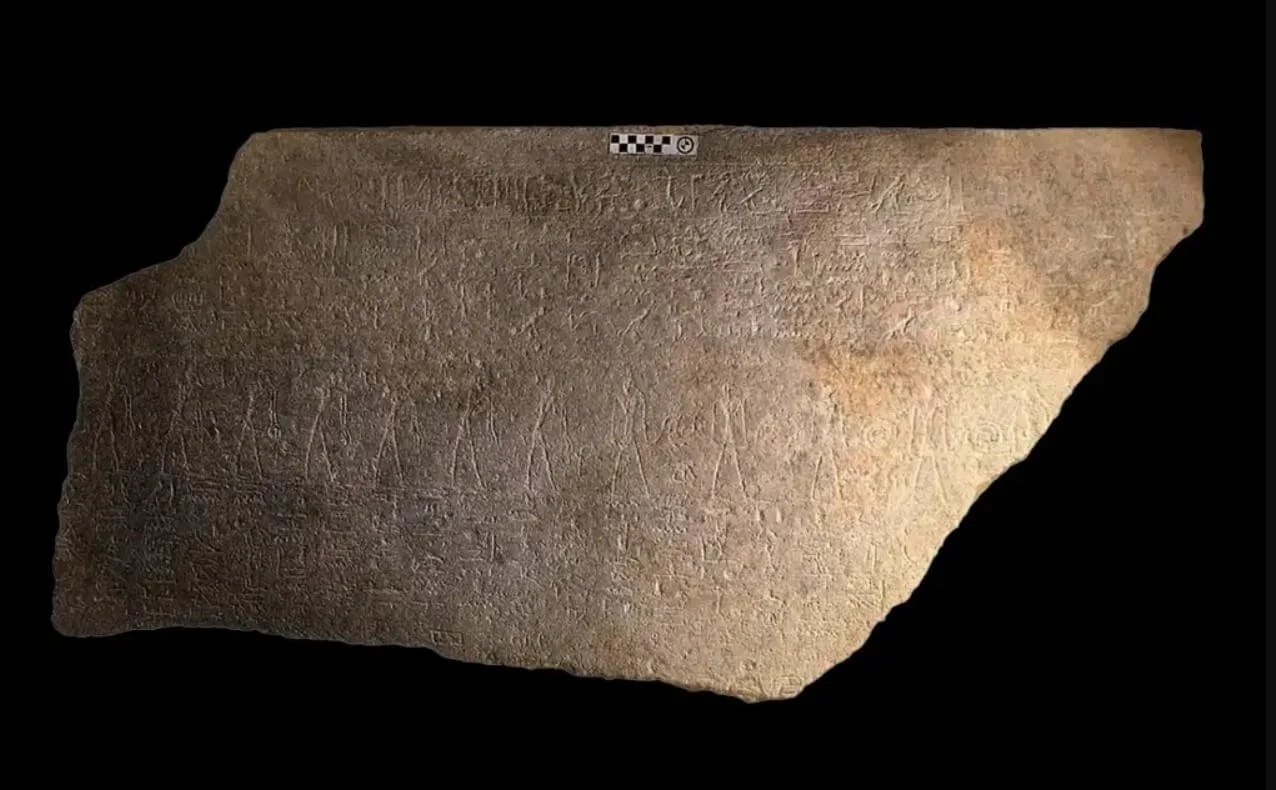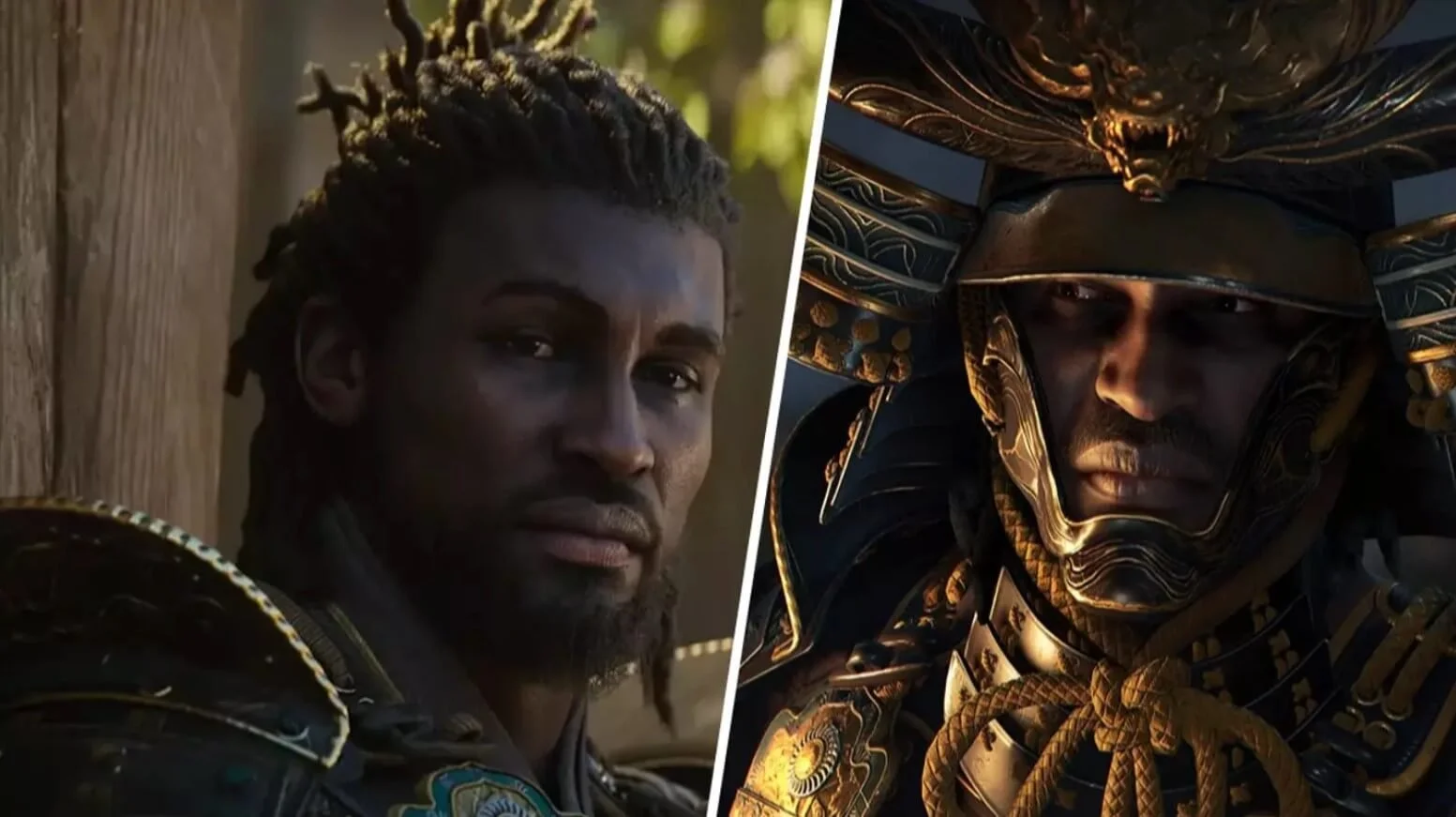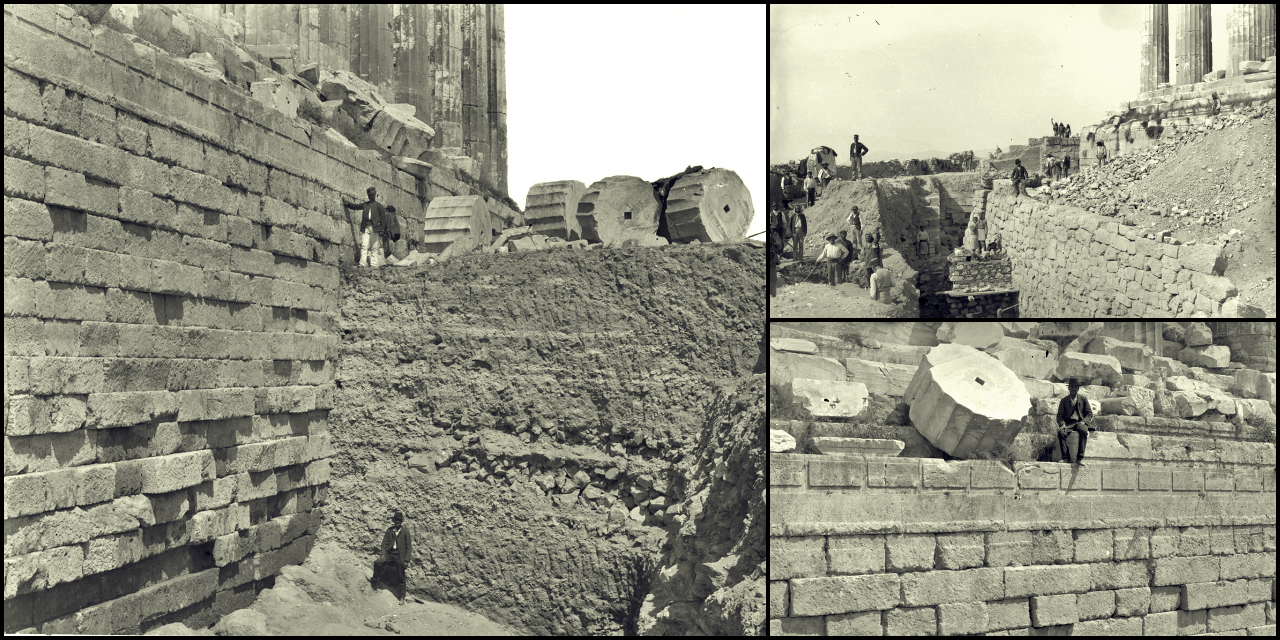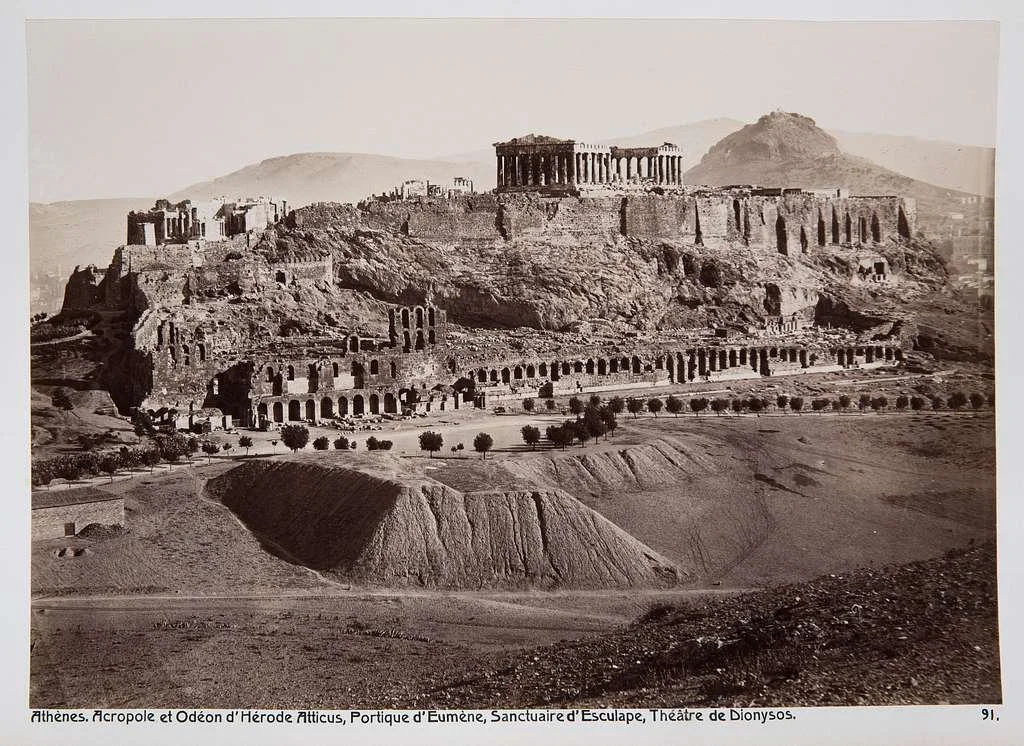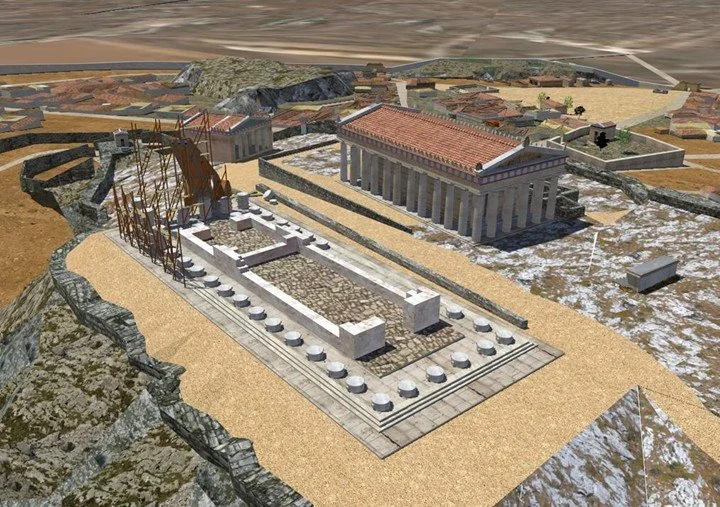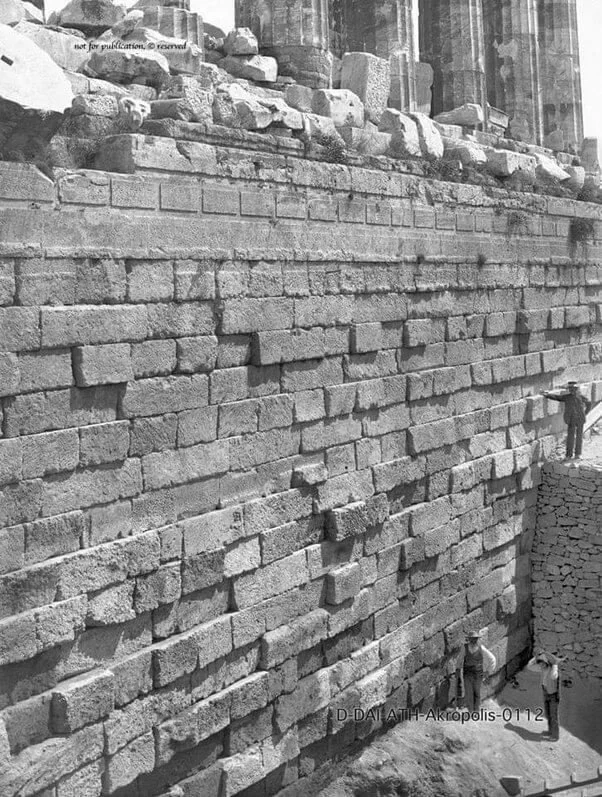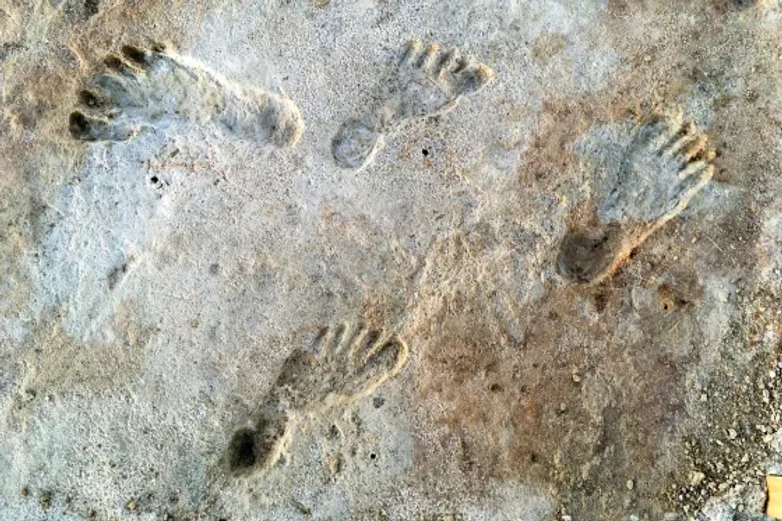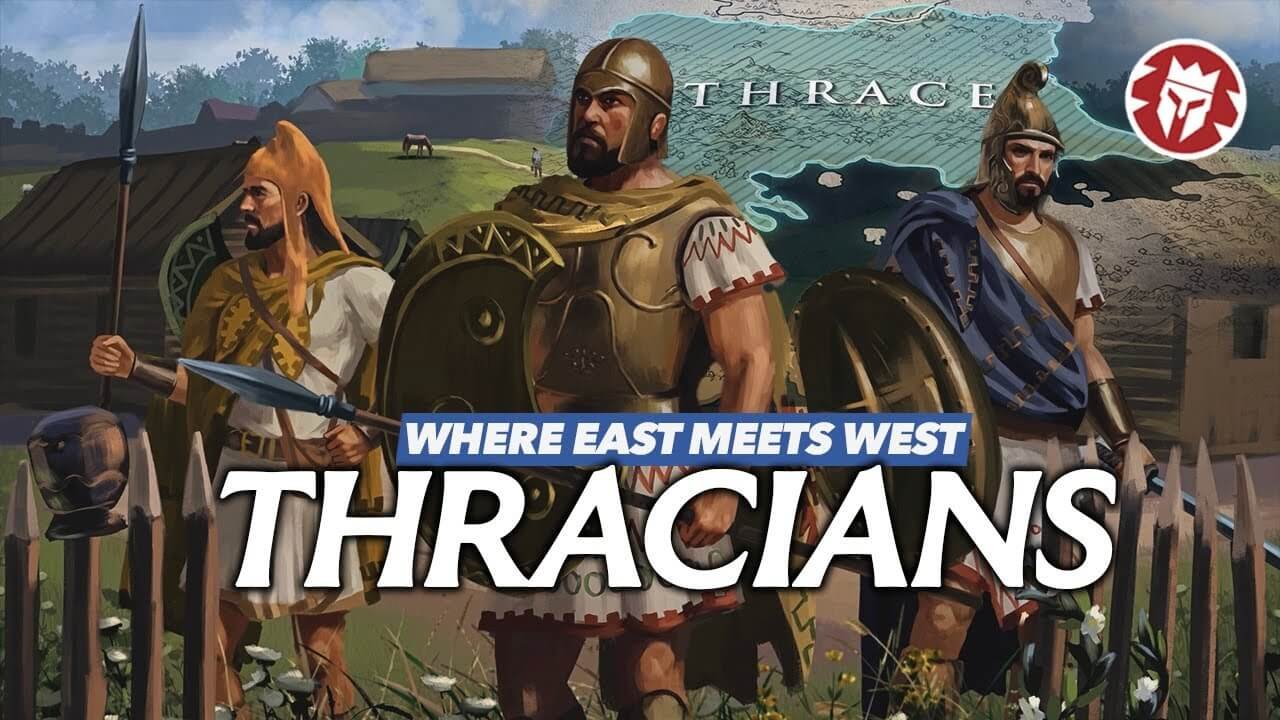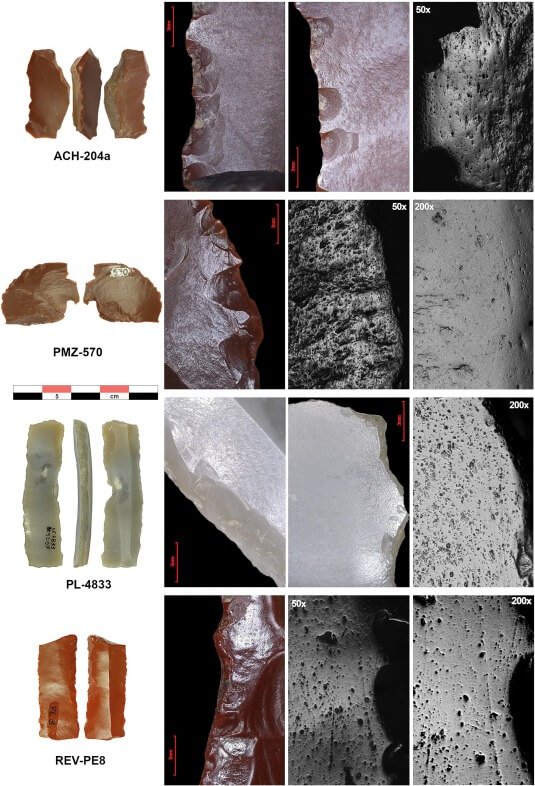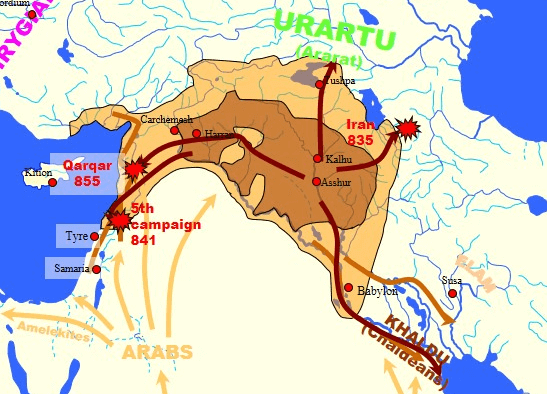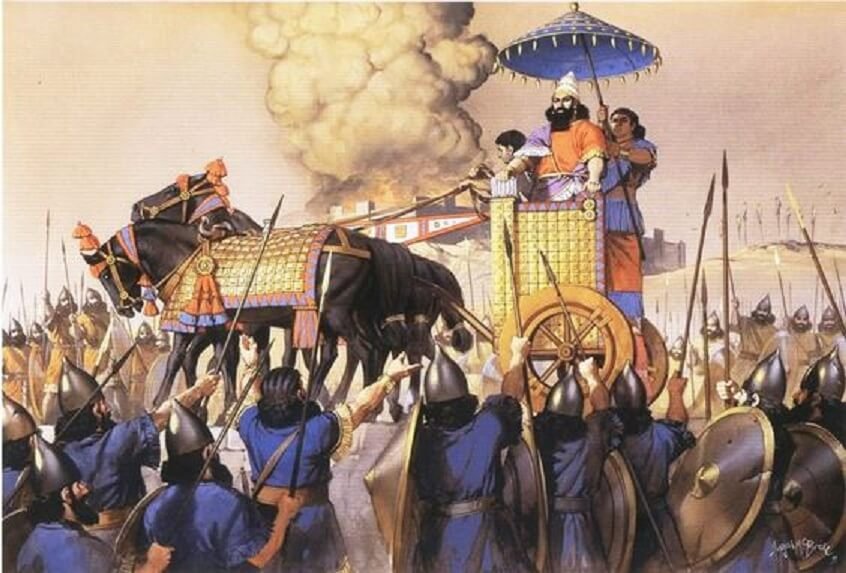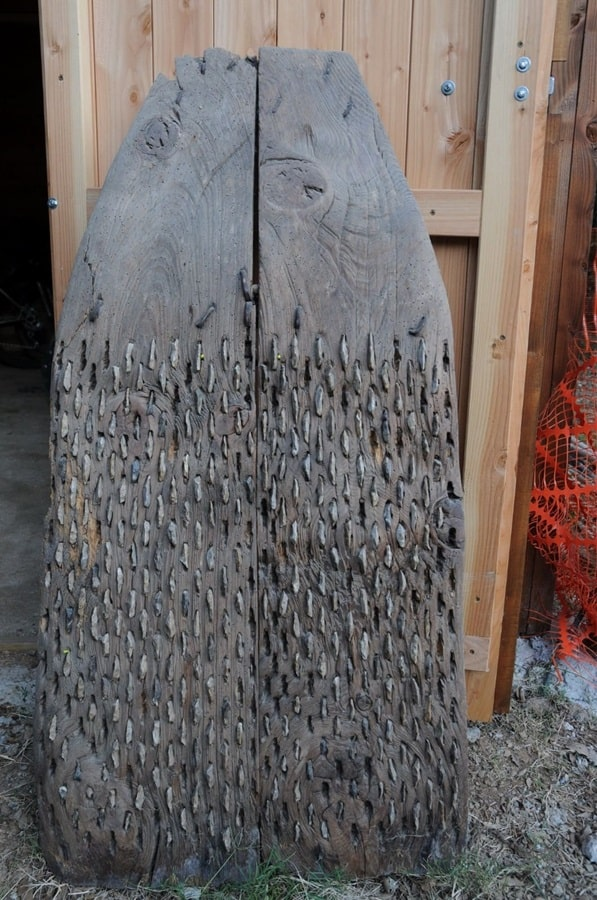The late Jurassic period, 150 million years ago, was a time of immense geological change, with land masses almost unrecognizable from their current forms, the emergence of the Atlantic Ocean and the largest known volcano, TAMU masif, spewing massive amounts of CO2 into the ocean and atmosphere. The period was also characterized by extreme temperatures, with seawater averaging 32.1 de C or 90° F, 25% hotter than the current average. The northern and southern hemispheres saw significant amounts of dry biomes, including deserts and savannas, while drier ecosystems gave way to lush expanses towards the equator. Earth was experiencing climactic conditions not seen for nearly 50 million years.
Evolution of Humans in 20 Minutes
Exploring Human Evolution: From Abiogenesis to Self-Consciousness
This video delves into the evolution of humans, starting with abiogenesis—the emergence of life from non-life—possibly in volcanic ocean vents. It introduces LUCA, the last universal common ancestor. While human evolution, including big brains and bipedalism, is well-understood, the leap to self-consciousness is still a mystery. Some philosophers suggest psychedelic mushrooms might have played a role.
The video also highlights how the biopharmaceutical company Sibin uses psychedelic-based therapies to address depression and anxiety effectively, contrasting with traditional antidepressants. It concludes by examining how oxygen and Earth's movement around the sun facilitated human evolution.
Unveiling the Grand Canyon's Mysteries Through Its Prehistoric Ruins
Discovering Ancient Ruins in the Grand Canyon
In an incredible exploration of the Grand Canyon, we follow a journey of discovery as someone stumbles upon ancient ruins from a prehistoric civilization. This adventurer backpacks into the remote corners of this natural wonder, revealing stories hidden within its massive walls. Despite its well-known beauty, the Grand Canyon still holds many secrets. This exploration aims to uncover these intriguing mysteries and inspire others to seek out the hidden history of this ancient landscape.
Watch the Video
Join this fascinating journey and uncover the ancient secrets of the Grand Canyon by watching the video below:
Strange wreckage discovered on farmer's field in Saskatchewan
A farmer and his son discovered a mysterious object while working on their 10,000-acre grain farm in East Saskatchewan, Canada. The object, which weighs around 100 pounds and is made of carbon fibre composite with aluminum honeycomb, appears to have been torched. The family is unsure about the object's origin and how it ended up on their land. Some experts suggest it could be part of a satellite that re-entered the Earth's atmosphere.
Saskatchewan has a history of strange objects making landfall, including a metallic object found in Wollaston Lake in 1968, which turned out to be a part of Canada's Alouette satellite. In 2022, a 3-meter piece of debris was found on a sheep farm in Australia and was investigated by space experts.
What is the Elamo-Dravidian Linguistic Hypothesis?
The Elamo-Dravidian linguistic hypothesis is a proposition in the field of historical linguistics suggesting a genealogical relationship between the Elamite language, once spoken in ancient Elam (modern-day southwestern Iran), and the Dravidian languages, primarily spoken in southern India and parts of eastern and central India. This hypothesis posits that both language families might have descended from a common ancestral language, implying a shared linguistic and perhaps cultural heritage.
Background and Development of the Hypothesis
Elamite Language
Elamite was the language of the ancient Elamite civilization, flourishing from the 3rd millennium BCE to the 1st millennium BCE. Elamite texts have been discovered in cuneiform script, primarily from the ancient cities of Susa and Persepolis. Despite its relatively well-documented corpus, Elamite remains difficult to classify, showing no clear affiliation with neighboring language families such as Indo-European or Semitic.
Dravidian Languages
The Dravidian language family includes major languages such as Tamil, Telugu, Kannada, and Malayalam, along with several other languages spoken in various regions of India and neighboring countries. These languages have a rich literary tradition and historical depth, with evidence of their existence dating back several millennia.
Proponents and Arguments
Linguistic Evidence
The primary advocate of the Elamo-Dravidian hypothesis was David McAlpin, who, in the 1970s and 1980s, presented several arguments based on linguistic data:
Vocabulary Parallels: McAlpin identified cognates between Elamite and Dravidian languages, suggesting common vocabulary items that might point to a shared ancestry.
Phonological Similarities: He noted certain phonological features, such as sound correspondences, that appear consistent between the two language groups.
Morphological Parallels: McAlpin also highlighted similarities in morphological structures, particularly in verb conjugations and noun declensions.
Archaeological and Genetic Evidence
Supporters of the hypothesis sometimes refer to archaeological and genetic evidence to bolster their claims.
Cultural Connections: Some argue that there might have been ancient migrations or cultural contacts between the Elamite region and the Dravidian-speaking regions, facilitated by trade or other interactions.
Genetic Studies: Genetic studies have occasionally been cited to suggest ancient population movements that could support the hypothesis of a common origin for the Elamite and Dravidian-speaking peoples.
The hypothesized tree of the Elamo-Dravidian family
Criticisms and Challenges
Despite the intriguing nature of the Elamo-Dravidian hypothesis, it has faced significant criticism and skepticism within the linguistic community.
Insufficient Evidence: Critics argue that the linguistic evidence presented by McAlpin is not robust enough to conclusively demonstrate a genealogical link. The similarities might be coincidental or the result of language contact rather than a common ancestry.
Lack of Consensus: The broader linguistic community has not reached a consensus on the validity of the hypothesis. Many linguists remain unconvinced due to the lack of comprehensive evidence and the speculative nature of some of the connections.
Alternative Explanations: Some suggest that similarities between Elamite and Dravidian might be better explained by language contact or borrowing rather than a direct genealogical relationship.
Conclusion
The Elamo-Dravidian linguistic hypothesis remains a controversial and largely speculative theory within historical linguistics. While it presents an intriguing possibility of a shared heritage between the ancient Elamite civilization and the Dravidian-speaking populations of India, the evidence currently available is not sufficient to draw definitive conclusions. Further research, potentially involving more comprehensive linguistic, archaeological, and genetic data, would be necessary to provide a clearer picture of any potential connections between these language families.
Long side of the granite sarcophagus identified as that of Ramesses II. Credit: Kevin Cahail
Experts Identify the Original Sarcophagus of Ramesses II: A Landmark Discovery
The identification of the original sarcophagus of Ramesses II by an archaeologist at the Sorbonne University marks a significant breakthrough in Egyptology. This discovery, made during recent excavations, offers unprecedented insights into the burial practices and material culture of the New Kingdom period. This paper outlines the methods used to identify the sarcophagus, its historical context, and the implications for our understanding of Ramesses II's reign.
Ramesses II, also known as Ramesses the Great, ruled Egypt during the 19th Dynasty and is one of the most celebrated pharaohs in ancient Egyptian history. His reign, characterized by extensive building projects and military campaigns, left a lasting legacy. However, the original resting place of his sarcophagus had remained elusive until now.
Discovery and Identification
During an excavation in the Valley of the Kings, archaeologists uncovered a well-preserved sarcophagus that has been identified as the original burial container for Ramesses II. Advanced imaging techniques and material analysis were employed to confirm its authenticity. Hieroglyphic inscriptions and iconographic elements unique to Ramesses II's time were crucial in the identification process.
Historical Context
The sarcophagus dates back to approximately 1279–1213 BCE, coinciding with Ramesses II's reign. Its elaborate design reflects the artistic and religious conventions of the period. The inscriptions include references to deities such as Ra and Osiris, highlighting the pharaoh's divine association and the funerary beliefs of ancient Egypt.
Implications for Egyptology
This discovery sheds light on the burial practices of the New Kingdom, particularly the efforts to protect the remains of significant rulers. It also offers insights into the craftsmanship and resources dedicated to royal burials. The findings provide a deeper understanding of the political and religious landscape of Ramesses II's Egypt.
The identification of Ramesses II's original sarcophagus is a landmark achievement in archaeological research. It not only enhances our knowledge of one of Egypt's greatest pharaohs but also enriches our understanding of ancient Egyptian civilization. Future research will focus on further analysis of the sarcophagus and its context within the broader landscape of New Kingdom mortuary practices.
Assassin's Creed Shadows Faces Backlash Over Black Samurai
Ubisoft's latest installment in the Assassin's Creed series, "Assassin's Creed Shadows," has ignited a fervent debate within the gaming community. The game's narrative centers around Yasuke, a historical Black samurai, set in feudal Japan. Yasuke served under Oda Nobunaga in the 16th century, and his story, though lesser-known, is gaining renewed interest.
The Historical Yasuke
Yasuke was an African warrior who arrived in Japan in the late 16th century and became a retainer of the powerful daimyo Oda Nobunaga. His historical presence has been documented, albeit sparingly, providing Ubisoft with a unique narrative opportunity. The game aims to explore his experiences and the challenges he faced as an outsider in Japanese society.
The Controversy
The controversy began with the release of the game's trailer. Critics argue that Ubisoft's decision to focus on Yasuke over a native Japanese protagonist is a move driven by modern political correctness rather than historical accuracy. Some fans feel that this choice diverts from the series' potential to highlight East Asian protagonists, while others question the authenticity of Yasuke's depiction as a samurai.
Support for Yasuke's Story
On the other side, many applaud Ubisoft for bringing Yasuke's story to the forefront. They highlight the importance of diversity in media and the value of representing historical figures who have been overlooked. Yasuke's inclusion is seen as a way to enrich the narrative and provide a fresh perspective on Japanese history. Supporters also note that Yasuke's story has been previously validated in other games and media, underscoring his legitimacy as a historical figure.
Ubisoft's Response
Ubisoft has defended its creative direction, emphasizing that Yasuke's unique perspective enriches the narrative experience. By portraying Japan through the eyes of an outsider, the game offers a novel exploration of cultural interactions and societal dynamics. Ubisoft aims to strike a balance between historical fidelity and creative storytelling, ensuring that Yasuke's story is told with respect and depth.
Broader Implications
The debate around "Assassin's Creed Shadows" reflects broader discussions on representation and authenticity in the gaming industry. As video games continue to be a powerful medium for storytelling, the choices developers make about their characters and narratives are increasingly scrutinized. Ubisoft's decision to feature Yasuke highlights the challenges and opportunities in balancing historical accuracy with inclusive storytelling.
In conclusion, "Assassin's Creed Shadows" has become a flashpoint in the ongoing dialogue about diversity in media. As the release date approaches, it remains to be seen how the game will be received and whether it will succeed in bridging the gap between historical intrigue and modern representation.
Excavating the Foundations of the Parthenon: Unveiling Ancient Secrets
The Acropolis of Athens, a monumental symbol of Greek heritage, has stood the test of time and conflict. Its most iconic structure, the Parthenon, has experienced both glory and devastation throughout the centuries. One pivotal period in its history was the excavation that took place between 1885 and 1890, led by archaeologists Panagiotis Kavvadias and Georg Kawerau. This monumental undertaking revealed not only the foundations of the Parthenon but also unearthed significant artifacts that provide invaluable insights into ancient Greek civilization.
The Context of Excavation
In the early 19th century, Greece fought for independence from centuries of Ottoman rule. During the Greek War of Independence in the 1820s, the Acropolis became a battleground. The Turkish army, in a desperate bid for resources, dismantled parts of the Parthenon, removing hundreds of marble blocks and repurposing lead-coated iron clamps to make bullets. This destruction added to the historical layers that the 1885-1890 excavation would later uncover.
The Scale of the Excavation
The Great Excavation of the Acropolis, particularly intense between 1885 and 1890, was a massive endeavor that rivaled even the largest archaeological projects of the time. Thousands of square meters were excavated to varying depths, with the area south of the Parthenon reaching depths of over 15 meters. This extensive digging revealed the natural rock beneath, providing a comprehensive understanding of the site's ancient topography.
The meticulous work carried out during this period stands out not only for its scale but also for the consistency in methodology and the wealth of artifacts uncovered. The excavation uncovered almost all known works of sculpture and architectural fragments from the archaic temples and other early buildings of the Acropolis. This included marble Kores (female statues), inscribed bases, copper and clay items, and numerous classical sculptures.







Discovering the Older Parthenon
Among the most significant discoveries was evidence of an earlier structure, known as the Older Parthenon or Pre-Parthenon. The foundations of the current Parthenon are, in many places, much older than the temple itself. To the east of the Parthenon, a gigantic podium extends about five meters beyond the line of the first marble step, indicating an older construction phase.
Historical records suggest that the Older Parthenon was under construction when the Persian Empire attacked Athens in 480 B.C., leading to the destruction of the Acropolis. However, this theory is still a matter of debate among scholars. The excavation confirmed that much of the fill above the natural rock, known as the "Persian debris," dated back to the aftermath of this destruction, offering a clear stratigraphic record of the site's turbulent history.
Significant Findings and Their Implications
One of the most remarkable discoveries was the "Pit of the Maidens," unearthed in 1886 near the northwest of the Erechtheion, in the presence of King George I and other dignitaries. This pit contained fourteen broken statues of marble Korae, fragments of inscriptions, and other artifacts, including a treasure trove of 62 Athenian silver coins. These finds were linked to the cleanup of the Acropolis following its destruction by the Persians.
The artifacts recovered from the Persian debris provide crucial information about the destruction and subsequent reconstruction of Athens. The finds from the Great Excavation significantly advanced the field of Greek archaeology, offering a detailed glimpse into the architectural and artistic practices of ancient Athens.
Legacy and Historical Impact
The Great Excavation of the Acropolis, documented extensively by the German Archaeological Institute in Athens, remains a cornerstone of archaeological research in Greece. The scale and significance of the work conducted by Kavvadias and Kawerau are evident in the wealth of artifacts and structural insights they uncovered. Their efforts have provided a foundation for understanding the ancient history of Athens and the resilience of its people.
As we reflect on the discoveries made during this pivotal excavation, we are reminded of the enduring legacy of the Parthenon and the Acropolis. These monuments continue to inspire awe and admiration, standing as testaments to the rich cultural heritage and historical depth of Greece. The excavation of 1885–1890 not only brought to light the ancient secrets buried beneath the Acropolis but also reaffirmed the importance of preserving and studying our shared human history.
Why Our Ancestors Had Chiseled Faces & Didn't Need Braces?
Modern orthodontic issues like crooked teeth and misaligned jaws are rare in ancient populations. This article explores the reasons behind this phenomenon, focusing on diet, breastfeeding practices, breathing patterns, and lifestyle differences. The video "Why Our Ancestors Had Chiseled Faces & Didn't Need Braces?" discusses the reasons behind the well-formed facial structures and aligned teeth of our ancestors.
Key points include:
Diet and Jaw Development Ancestors' diets consisted of tough, fibrous foods that required significant chewing. This constant jaw exercise led to well-developed jaws and properly aligned teeth. In contrast, modern diets are softer, reducing the need for extensive chewing and thus leading to underdeveloped jaws and crowded teeth.
Breastfeeding and Weaning Practices Extended breastfeeding periods and natural weaning onto solid foods helped in the proper development of jaws and dental arches. This practice allowed for a gradual and natural progression in chewing abilities and jaw strength, contributing to better dental alignment.
Breathing Patterns Ancient humans predominantly engaged in nasal breathing, which is crucial for proper facial development. Mouth breathing, common in modern populations due to allergies or chronic congestion, can lead to elongated faces and narrower dental arches.
Active Lifestyle An active lifestyle with a natural, unprocessed diet played a significant role in maintaining robust facial structures. The lack of processed foods and the physical demands of ancient life contributed to overall better dental health.
Conclusion Understanding these factors can help modern populations address and possibly prevent some orthodontic issues through dietary choices, encouraging nasal breathing, and promoting natural breastfeeding and weaning practices.
For more detailed insights, watch the video below:
Survey area projected on Google Maps (Archaeological Prospection)
Archaeologists baffled by substantial 'anomaly' discovered beneath Giza pyramids
Archaeologists have identified a significant "anomaly" buried beneath the Giza pyramid complex in Egypt, using advanced tools like ground-penetrating radar. This discovery was made under the Western Cemetery, near the 4,500-year-old Great Pyramid, revealing two underground structures: one shallow and one deep.
The researchers noted the structures' density differs from the surrounding ground, suggesting they are man-made and were likely backfilled after construction. The Western Cemetery is a known burial site for royal family members and high-ranking officials. An initial survey using ground-penetrating radar and electrical resistivity tomography detected the anomaly in the northern part of the survey site, though the exact structure and location remained unclear.
The shallow structure measures 10 meters wide by 15 meters long and is less than 2 meters deep. It is believed to have been built to support the larger, deeper structure, which ranges from 5 meters at its shallowest to 10 meters at its deepest point. The researchers theorize that the shallow structure may have served as an entrance to the deeper one, possibly caused by a mixture of sand and gravel or sparse spacing with air voids.
They emphasize the importance of the continuity between the shallow and deep structures. While the exact material causing the anomaly remains undetermined, it is likely a significant subsurface archaeological structure. The team hopes that careful excavation will reveal the nature of these intriguing structures.
The footprints are the earliest known evidence of humans in North America(NPS, USGS and Bournemouth University)
Archaeologists have uncovered a groundbreaking discovery that reshapes American history
Archaeologists have uncovered a groundbreaking discovery that reshapes American history, thanks to ancient footprints.
These human tracks, found in White Sands National Park, New Mexico, are the oldest ever recorded on the continent. Previously believed to be between 11,500 and 13,000 years old, new analysis reveals they date back 23,000 years. This discovery indicates that humans inhabited North America at least 10,000 years earlier than previously thought, possibly even earlier, around the end of the last ice age over 32,000 years ago.
“This site in New Mexico has rewritten the history books,” said Sally Reynolds, a principal academic in paleoecology at Bournemouth University. “These footprints offer a valuable window into the lives of our ancestors, showing how much they were like us.” She highlighted the fascinating insights into human activity and interaction with the landscape and animal life.
The footprints not only hold historical significance due to their age but also provide an unprecedented snapshot of life during that era. From children playing in puddles to hunters pursuing a giant sloth, these 23,000-year-old tracks reveal rich details of our Pleistocene past. They were made by people walking on wet ground at the edge of a now-dry lake. While some tracks are visible today, others are detectable only with ground-penetrating radar.
Matthew Bennett, a Bournemouth University researcher and lead author of two scientific papers on these footprints, told Smithsonian Magazine that although older human tracks exist in Africa and other parts of the world, none tell as vivid and relatable a story. His first paper, published in Science in 2021, described a perilous journey by what appears to be a young woman or adolescent girl carrying a child on her hip across a muddy lakeshore, with predators like dire wolves and saber-toothed cats nearby.
The prints were found at White Sands National Park in New Mexico, which was once home to a large lake(NPS)
Bennett explained how they could see where she slipped in the mud and set the child down, indicating the child was likely under three years old. The child did not accompany the woman on her return journey, raising questions about their fate.
“The footprints left at White Sands reveal teenagers interacting with younger children and adults,” Bennett said in a separate statement. “They show not just functional activities like hunting and surviving but also play and social interaction. This offers a true insight into these early people.”
While the footprints provide exciting glimpses into life 23,000 years ago, Bennett and his team are now focused on understanding how humans arrived in North America. “We need many more sites to understand their origins and migration routes,” Bennett told the Smithsonian. “The lasting legacy of White Sands is to point the way to a new archive of evidence.”
The head of a statue of Hygieia, the Greek goddess of health, discovered in Turkey
The head of a statue of Hygieia, the Greek goddess of health, was discovered wedged between two rocks in Laodikeia
During excavations in the ancient city of Laodikeia, located in Pamukkale, Denizli, in southwestern Turkey, archaeologists unearthed a 2,100-year-old statue head of Hygieia, the Greek goddess of health.
Laodikeia, situated on the southern side of the Lycus River, 6 kilometers north of Denizli, was a prominent and influential city in the 1st century B.C. The city's historical significance dates back to its founding by Antiochus II between 263-261 B.C., named after his wife, Laodice. Ancient sources referred to it as "Laodikeia on the edge of the Lycus." The Romans later established it as the center of Kybira's conventus due to its strategic location.
The city boasted impressive structures, including Anatolia's largest stadium, two theaters, four baths, five agoras, five fountains (nymphaeums), long colonnaded streets, grand temples, and numerous churches and basilicas.
Despite its grandeur, Laodikeia was frequently struck by earthquakes, with a devastating quake in 494 AD significantly damaging the city. Another major earthquake between 602 and 610 AD, coupled with increasing Arab raids, led to its eventual abandonment.
The ongoing excavations, led by Prof. Dr. Celal Şimşek from Pamukkale University's Archaeology Department, revealed the statue head. Şimşek announced the discovery on his social media X account, stating, "The meeting of the Sun and Hygieia with us in Laodikeia after 2,100 years."
Hygieia, the goddess of health, inspired the philosophy of hygiene. She was the daughter and chief attendant of Asklepios, the god of medicine, overseeing cleanliness and preventive medicine. Classical sculptures often depicted her holding or feeding a large snake, a symbol of Asklepion medicine. Her statues were prominent in major healing centers, including Epidaurus, Corinth, Cos, and Pergamon.
The Department of Excavations and Research shared photographs of the remarkable statue head discovery.
A New Study Decodes Ancient Migrations: Haplogroup L1-M22 and Its Link to Elamite and Dravidian Heritage
A new study titled "Human Y chromosome haplogroup L1-M22 traces Neolithic expansion in West Asia and supports the Elamite and Dravidian connection" by Ajai Kumar Pathak and colleagues provides significant insights into the genetic and cultural evolution of populations in West and South Asia. This research focuses on the Y chromosome haplogroup L1-M22, examining its origin, migration, and demographic history. The study utilizes Bayesian analysis of 165 high-coverage Y chromosome sequences to trace the haplogroup's lineage and its impact on historical dynamics in Eurasia.
Findings
Origin and Early Spread
The haplogroup L1-M22 is traced back to approximately 20.6 thousand years ago (kya), with a West Asian origin. This period coincides with the Last Glacial Maximum (LGM), a significant climatic event. The analysis indicates that L1-M22 shares genome-wide genetic ancestry with hunter-gatherers from the Iranian Plateau and the Caucasus. During the Early Holocene, the haplogroup divided into two major groups: one that expanded with the Neolithic transition in West Asia and another that migrated to South Asia between 8 and 6 kya without significant expansion.
Population Movements and Linguistic Impacts
The study identifies that South Asian L1-M22 lineages began to expand around 4 to 3 kya, coinciding with the introduction of Steppe ancestry into the region. This timing aligns with the hypothesis that these lineages contributed to the spread of Dravidian languages in South Asia. Furthermore, the research supports the Elamo-Dravidian hypothesis, suggesting a connection between the Dravidian languages and the ancient Elamite language spoken in southwestern Iran.
Genetic Diversity and Cultural Transition
Bayesian phylogeographic analysis reveals intensive diversification in and around the Fertile Crescent, particularly around 10 kya. This diversification coincides with the Neolithic demographic transition, a pivotal shift from a hunter-gatherer lifestyle to agricultural societies. The genetic evidence underscores that populations with the CIHG autosomal heritage significantly contributed to the dissemination of haplogroup L1-M22 across West Asia during this period.
Key Genetic Findings
Haplogroup Origin: The haplogroup L1-M22 originated in West Asia around 20.6 kya.
Early Divergence: During the LGM, L1-M22 diverged into distinct branches, with major expansions occurring during the Neolithic transition.
Population Dynamics: The population dynamics of L1-M22 show significant expansions in West Asia around 10 kya and in South Asia around 4 to 3 kya, correlating with historical migration patterns and linguistic spread.
Conclusion
This comprehensive genetic study of haplogroup L1-M22 offers a nuanced understanding of Eurasian historical dynamics. It highlights the significant role of West Asian populations in shaping the genetic landscape and cultural heritage of the region. The findings also emphasize the need for further interdisciplinary research to fully unravel the intricate patterns of human history.
The Thracians: Ancient Balkan Nation's Influence on European and Asian Civilizations
The Thracians, an Indo-European-speaking people, inhabited large parts of Southeast Europe, primarily in modern-day Bulgaria, Romania, and northern Greece. Their origins are obscure, but they are believed to have descended from a mixture of Proto-Indo-Europeans and Early European Farmers. Around the 5th millennium BC, various indigenous groups in the eastern Balkans were collectively identified by the Greeks as Thracians. Thracian culture began to take shape during the early Bronze Age, flourishing in the 3rd and 2nd millennia BC and developing into distinct groups like the Getae and Dacians.
Origins and Early Development
The origin of the name 'Thracians' remains uncertain, with theories ranging from Greek mythology to various historical sources. Despite this ambiguity, it is clear that the Thracians had a deep-rooted presence in the Balkans, influencing regions that correspond to modern-day Romania, northern Greece, and Bulgaria. Archaeological evidence suggests that Thracian culture began to take shape during the early periods of human settlement in these areas. The Thracians were known for their strong cultural interactions with neighboring peoples, engaging in frequent trade and cultural exchanges that enriched their own society.
Interaction with Persians and Greeks
Thracians experienced significant cultural influences during Persian rule, particularly in their artifacts. However, coastal Thracians resisted Persian dominance and maintained trade links with the Greeks, leading to rich cultural exchanges. Greek historians often described Thracians as warlike and uncivilized, yet noted their sophisticated poetry and music. Thracian warriors were highly valued as mercenaries by both Greeks and Romans.
Rise of Thracian Elites and State Formation
In the 5th century BC, the Thracian elites, controlling vital resources like grain and minerals, consolidated power to form the Odrysian Kingdom. Seuthes the First played a significant role in integrating the kingdom’s economy and enhancing royal wealth. Despite this, the Thracians remained fragmented, which Greek and Roman sources noted as a reason for their inability to establish lasting political unity. However, they achieved significant military feats and territorial expansion during this period.
Macedonian Conquest and Thracian Independence
The Thracians faced subjugation by Philip of Macedon, becoming a vassal state. After Alexander the Great's death, they regained independence under the leadership of Seuthes III, with support from northern allies. This period of independence was marked by internal strife and external threats, particularly from neighboring tribes and empires.
One Of The Most Amazing Projects Ever: The Reviving Of The Submerged Ancient Thracian City Of Seuthopolis
Roman Conquest and Integration
Thracians were gradually incorporated into the Roman Empire in the mid-2nd century BC. Despite the Romanization of urban areas and infrastructure development, rural Thracians retained their indigenous culture and language for an extended period. The Thracians played a significant role in Roman military campaigns, notably the rebellion led by Spartacus, a Thracian gladiator.
Cultural and Religious Contributions
Thracian culture was rich and multifaceted, heavily influenced by interactions with Greeks, Persians, Scythians, and Celts. Their polytheistic religion included deities like Zalmoxis and Sabazios, with elements of Greek mythology. Thracian society was noted for its practice of tattooing and elaborate burial customs. Despite being perceived as barbarians by Greeks and Romans, the Thracians had a profound cultural impact, particularly in poetry and music.
Thracian Legacy and Archaeological Wonders
The Thracians made significant contributions to the cultural mosaic of the Balkans and the Eastern Mediterranean. During the late antique period, they were situated near Constantinople, the new capital of the Roman Empire, and experienced significant political and cultural shifts. The adoption of Christianity led to the construction of numerous churches in Thracian provinces, fostering urbanization and the Christianization of the region.
Archaeological findings have uncovered impressive Thracian artifacts, including ornate jewelry, weapons, and tombs, highlighting their craftsmanship and artistic achievements. These discoveries provide insight into the sophisticated nature of Thracian society, countering the ancient portrayals of them as primitive barbarians.
The Thracians were a formidable and influential ancient nation whose cultural and historical impact resonates through the ages. From their early developments and interactions with powerful neighbors to their integration into the Roman Empire, the Thracians exemplify a rich and dynamic chapter in the history of European and Asian civilizations. Their legacy, preserved through impressive archaeological finds and historical records, continues to fascinate scholars and enrich our understanding of the ancient world.
Poliochni of Lemnos: The Oldest City in Europe and a Cradle of Democracy
Nestled on the island of Lemnos, Poliochni stands as a testament to the ancient roots of European civilization. Recognized as the oldest city on the European continent, Poliochni is a site of immense archaeological and historical significance. Its discovery and excavation have provided scholars with a window into early urban development and the embryonic stages of democratic governance.
Discovery and Excavation
Poliochni was first excavated in the early 20th century by the Italian School of Archaeology at Athens. The site revealed a multi-layered settlement that spanned several millennia, with evidence of continuous habitation from the Late Chalcolithic to the Late Bronze Age. The richness of its artifacts and the complexity of its structures quickly set Poliochni apart as a site of major importance in understanding prehistoric Aegean societies.
The Urban Layout
Poliochni's urban planning is remarkably sophisticated for its time. The city was divided into distinct quarters, each serving different functions. The architecture includes residential areas, workshops, and public buildings, all arranged in a grid-like pattern. This layout indicates a high level of social organization and communal planning, which is quite advanced considering the era in which the city thrived.
Democratic Structures
One of the most intriguing aspects of Poliochni is the evidence of democratic structures within its society. Central to this is the "Bouleuterion," a communal meeting space that points to the practice of collective decision-making. The Bouleuterion served as a gathering place for the city’s inhabitants to discuss and decide on matters of common interest, reflecting an early form of democratic governance.
The presence of the Bouleuterion in Poliochni predates similar structures found in classical Greece by several centuries. This challenges traditional narratives about the origins of democracy, suggesting that the principles of collective governance and public deliberation were experimented with much earlier than previously thought.
The Enigmatic Lemnos Stele: Bridging Aegean And Etruscan Civilizations
Societal Implications
The existence of such democratic practices in Poliochni offers profound insights into the social and political life of its inhabitants. It implies a society where individuals had a say in communal affairs, fostering a sense of participation and responsibility among the populace. This early experimentation with democratic principles highlights the innovative spirit of Poliochni's residents and their contribution to the broader development of political systems in human history.
Cultural and Historical Significance
Poliochni's importance extends beyond its architectural and political innovations. The city's artifacts, including pottery, tools, and jewelry, reveal a thriving culture engaged in trade and craftsmanship. These artifacts provide valuable information about the daily lives, beliefs, and economic activities of the people who lived there.
The city's strategic location on Lemnos also underscores its role as a significant hub in the prehistoric Aegean world. Poliochni likely facilitated interactions between different cultures and regions, contributing to the exchange of ideas and technologies that shaped the development of ancient societies, with its Anatolian features of the earliest layers were affected by cultural influences from Helladic Greece, about the start of Early Helladic II, ca. 2500 BC.
Gold treasure from Poliochni, National Archaeological Museum of Athens
Legacy and Modern Appreciation
Today, Poliochni is celebrated not only as the oldest city in Europe but also as a precursor to democratic governance. Its archaeological remains continue to be a focal point for research and exploration, offering new discoveries and insights into early European history.
Visitors to Lemnos can explore the site and imagine the bustling activity of an ancient city that once stood at the forefront of urban and political innovation. Poliochni serves as a reminder of the deep historical roots of democratic ideas and the enduring legacy of early human ingenuity.
In conclusion, Poliochni is more than an archaeological site; it is a symbol of early urbanism and democratic experimentation. Its discovery has reshaped our understanding of the development of European civilization, highlighting the sophisticated social structures that existed long before classical antiquity. As research continues, Poliochni will undoubtedly remain a key piece in the puzzle of humanity's past, offering inspiration and insight for future generations.
Use-Wear Evidence for the Use of Threshing Sledges in Neolithic Greece
A new study presents evidence of the early use of threshing sledges in Neolithic Greece through the analysis of macro- and microscopic use-wear traces on archaeological tools. These findings suggest that threshing sledges were employed from the early phases of the Neolithic period, around 6500 cal BCE. The integration of traditional use-wear analysis with quantitative methods, including confocal microscopy, has provided a deeper understanding of the early agricultural practices in the region. This research contributes to a broader understanding of Neolithic farming systems and the diffusion of agricultural technologies from the Near East to Europe.
The development of mechanical innovations such as chariots, ploughs, and threshing sledges played a crucial role in agricultural productivity and societal changes in prehistoric periods. The threshing sledge, or tribulum, facilitated the processing of large amounts of cereals and was integral to increased agricultural output. While traditionally associated with later Neolithic phases, this study explores the potential earlier use of threshing sledges in Neolithic Greece.
The Neolithic Site Of Dispilio: Interactive Learning Of A Neolithic Settlement In Northern Greece
Materials and Methods
Geographical framework and location of studied sites. ACH: Achilleion; PLA: Platia Magoula Zarkou; PL: Paliambella; REV: Revenia Korinos.
Archaeological Sites
The study focuses on four Neolithic sites in Greece: Achilleion, Platia Magoula Zarkou, Revenia Korinos, and Paliambela Kolindros. These sites span different phases of the Neolithic period and provide a comprehensive sample of early agricultural tools.
Archaeological Tools
Flaked stone tools from these sites were analyzed using stereoscopic and reflected-light microscopy to identify macro- and microwear patterns indicative of agricultural activities. The tools were further analyzed using a Sensofar Plu Neox blue light scanning confocal microscope to quantify the wear traces.
Results
Macroscopic and Microscopic Analysis
The analysis identified 250 harvesting inserts and 8 potential threshing sledge inserts. The threshing sledge inserts were characterized by heavily worn, rounded edges and mixed plant polish with abrasions, distinct from the glossy, smooth surfaces of harvesting inserts.
Quantitative Analysis
Confocal microscopy provided a quantitative comparison of the use-wear traces. Parameters such as core height, material ratio, and surface roughness were used to distinguish between different types of wear. The results confirmed that the threshing sledge inserts exhibited wear patterns consistent with those found on ethnographic and experimental threshing sledges.
Colin Renfrew’s Anatolian Hypothesis: Tracing The Roots Of Proto-Indo-European
Discussion
Selection of harvesting inserts used for quantitative analysis through confocal microscopy.
Early Use of Threshing Sledges
The findings suggest that threshing sledges were in use in Greece by 6500 cal BCE, earlier than previously documented. This early adoption indicates a rapid diffusion of agricultural technologies from the Near East to Europe during the Neolithic expansion.
Implications for Neolithic Farming
The use of threshing sledges would have significantly increased agricultural productivity, facilitating the accumulation of surplus crops and possibly contributing to social and economic changes. The evidence aligns with the broader context of early Neolithic innovations in farming practices, including the use of animal traction for various agricultural tasks.
Conclusions
This study provides new insights into the early use of threshing sledges in Neolithic Greece, challenging the traditional timeline of their introduction. The integration of quantitative methods with traditional use-wear analysis has enhanced the understanding of early agricultural practices and the diffusion of technology in the Neolithic period.
This research was supported by various grants and institutions, including the Italian Ministry for Education, Universities and Research, the Marie Sklodowska-Curie Individual Fellowship, and the University of Pisa. The authors express gratitude to collaborators and institutions that facilitated the study.
Selection of archaeological harvesting implements from the studied sites, on both flakes and blades. Note the presence of glossy, highly reflective, surfaces. At a microscopic level, smooth and flat polishes, with stria, pits, and comet tails like features are visible.
The Early Germanic Peoples: A Historical Overview from Ancient Sources
The early Germanic peoples, whose presence and movements have been documented from the 2nd century BC through late antiquity, played a pivotal role in shaping the historical and cultural landscape of Europe. Our understanding of these tribes and their interactions with neighboring civilizations primarily comes from various ancient historical documents, including works by Roman, Greek, and later, medieval historians. This article explores a comprehensive list of early Germanic tribes as depicted in these ancient sources, offering insights into their origins, migrations, and significant interactions.
The Early Germanic Tribes in Classical Sources
1. The Cimbri and Teutones (2nd Century BC) One of the earliest mentions of Germanic tribes comes from Roman historians who documented the movements of the Cimbri and Teutones. These tribes, originating from the Jutland Peninsula, embarked on extensive migrations, which eventually brought them into conflict with the Roman Republic. Their most notable clash occurred during the Cimbrian War (113-101 BC), culminating in the Battle of Vercellae in 101 BC, where the Romans achieved a decisive victory.
2. The Suebi The Suebi were another significant Germanic group mentioned by Julius Caesar in his work "Commentarii de Bello Gallico." Caesar encountered the Suebi during his campaigns in Gaul, describing them as a large and formidable confederation of tribes inhabiting areas around the Elbe River. The Suebi's influence extended over a vast territory, and they played a crucial role in the shifting alliances and conflicts of the period.
3. The Cherusci The Cherusci gained historical prominence through their leader, Arminius, who famously orchestrated the ambush and annihilation of three Roman legions in the Battle of the Teutoburg Forest in 9 AD. This defeat significantly halted Roman expansion into Germania and underscored the strength and resilience of the Germanic tribes.
Expansion and Consolidation in Late Antiquity
4. The Goths The Goths, divided into the Visigoths and Ostrogoths, are perhaps the most well-documented Germanic tribes of late antiquity. Their migrations and subsequent conflicts with the Roman Empire were chronicled by historians such as Jordanes in his work "Getica." The Visigoths, under King Alaric, famously sacked Rome in 410 AD, marking a significant moment in the decline of the Western Roman Empire. Meanwhile, the Ostrogoths established a powerful kingdom in Italy under the leadership of Theodoric the Great.
5. The Vandals The Vandals were another prominent Germanic tribe whose movements were recorded in detail by historians like Procopius. Originating from the regions around the Oder River, the Vandals migrated through Gaul and Spain before establishing a kingdom in North Africa. Under King Genseric, they captured Carthage in 439 AD and later sacked Rome in 455 AD, further contributing to the destabilization of the Western Roman Empire.
6. The Lombards The Lombards, whose early history was chronicled by Paul the Deacon in "Historia Langobardorum," migrated from their homeland in Scandinavia to settle in the Pannonian Basin. In 568 AD, led by King Alboin, they invaded Italy, where they established the Kingdom of the Lombards, which lasted until the Frankish conquest in the 8th century.
7. The Franks The Franks emerged as one of the most influential Germanic tribes in late antiquity. Their history is detailed in Gregory of Tours' "Historia Francorum." Initially a confederation of tribes along the Rhine, the Franks expanded their territory under leaders such as Clovis I, who unified the Frankish tribes and converted to Christianity, laying the foundation for the future Carolingian Empire.
Documentation and Legacy
Ancient historical documents, ranging from Roman military accounts to medieval chronicles, provide a rich tapestry of information about the early Germanic peoples. These sources offer glimpses into the complex interactions between the Germanic tribes and the Roman world, highlighting periods of conflict, migration, and eventual settlement. As these tribes moved and established new territories, they left an indelible mark on the cultural and political landscape of Europe, shaping the continent's history for centuries to come.
In conclusion, the early Germanic peoples, documented by various ancient sources, played a crucial role in the transformation of Europe from the classical to the medieval era. Their dynamic movements, formidable resistance against Roman expansion, and eventual establishment of powerful kingdoms underscore their significance in the annals of history. These ancient documents not only chronicle their exploits but also preserve the legacy of a diverse and influential group of peoples whose impact continues to be felt in modern historical discourse.
The Battle of Qarqar in 853 BC: The First Grand Alliance in History
The Battle of Qarqar, fought in 853 BCE, stands as a landmark event in the annals of military history, notable for featuring the earliest documented military alliance among a coalition of twelve kingdoms. This confederation was assembled to counter the expansive ambitions of the Assyrian Empire under King Shalmaneser III. The battle, although not decisively conclusive in its military outcomes, offers profound insights into the geopolitical dynamics of the ancient Near East and the complexities of coalition warfare.
Background and Strategic Context
During the early 9th century BCE, the Assyrian Empire, led by Shalmaneser III, was in a phase of aggressive territorial expansion. Assyria's military campaigns were directed towards consolidating control over trade routes and subjugating regions rich in resources. This expansionist policy inevitably brought Assyria into conflict with the states of the Levant, which were determined to resist Assyrian domination.
The strategic significance of Qarqar, located on the Orontes River in modern-day Syria, derives from its position as a crucial junction controlling access to the Mediterranean coast. The battle that unfolded there was precipitated by Assyria’s move to secure control over this pivotal region, prompting the formation of an unprecedented alliance among the kingdoms of the Levant.
The Grand Alliance
The coalition, famously chronicled in the Kurkh Monolith—a stela inscribed with the annals of Shalmaneser III—comprised an array of twelve kings. This alliance included Hadadezer of Damascus, Ahab of Israel, Irhuleni of Hamath, and other rulers from the Aramean and Syrian states, as well as contingents from Egypt and possibly the remnants of the Hittite empire. The text claims that the combined forces amounted to a formidable count of more than 50,000 infantry and 4,000 chariots, a figure likely exaggerated by Assyrian scribes to glorify their military prowess.
This alliance is considered the first of its kind due to its scale and the diversity of the participating polities. It exemplifies a sophisticated level of diplomatic negotiation and military coordination among ancient states, each with its own interests and motivations for joining the coalition against a common adversary.
Illustration of the Battle of Qarqar in 853 BCE between the Neo-Assyrian Empire led by Shalmaneser III and an alliance of twelve kings who waged war against him. Illustration by by Seán Ó’Brógáín.
The Battle and Its Aftermath
The battle itself was a massive engagement, with both sides deploying large forces in a confrontation that lasted the entire day. Assyrian records claim a victory, boasting of immense slaughter and a tactical retreat by the enemy. However, the lack of decisive Assyrian follow-up actions and their temporary halt of further advances into Levantine territories suggest a more ambiguous outcome. It appears that the coalition managed to check Assyria’s advance, preserving their autonomy for a time, despite not achieving a clear-cut battlefield victory.
The immediate aftermath of the Battle of Qarqar saw a temporary stabilization of borders but no lasting peace. Subsequent campaigns by Shalmaneser III over the following years indicate that the Assyrian threat persisted, leading to further conflicts in the region. Nevertheless, the alliance at Qarqar set a significant precedent for collective defense against imperial conquest, highlighting the potential of coordinated multi-state resistance.
Historical Significance and Legacy
The Battle of Qarqar is a seminal example of ancient diplomacy and warfare. It illustrates the complexities of alliance warfare, where diverse political entities with varying capabilities and goals come together to confront a superior power. The battle underscores the importance of strategic geography and highlights the perennial struggle for control over vital trade routes and economic resources in the ancient world.
Moreover, the Qarqar alliance provides early evidence of the lengths to which communities will go to preserve their independence and identity in the face of overwhelming odds. This event not only offers a glimpse into the military tactics of the time but also into the diplomatic negotiations and alliances that have come to define much of human history.
In conclusion, the Battle of Qarqar and the alliance formed to contest Assyrian dominance mark a significant chapter in military history, embodying the earliest known instance of a large-scale coalition formed in response to the threats posed by imperial ambitions. This episode serves as a testament to the resilience and resourcefulness of the ancient states of the Near East, whose legacy of cooperation and conflict continues to inform our understanding of international relations and military strategy today.
A threshing sledge. Credit: University of Pisa
Groundbreaking study reveals that threshing sledges were used in Neolithic Greece 3000 years earlier than previously believed
A groundbreaking study reveals that threshing sledges were used in Neolithic Greece as early as 6500 BCE, which is about 3000 years earlier than previously believed.
Threshing sledges, historically used across Mediterranean countries from Turkey to Spain for separating chaff from wheat, have now been dated back to Greece around 6500 BCE. By employing advanced analytical techniques, such as co-orientated microscopy, researchers from the University of Pisa traced the early use of these agricultural tools, marking them as some of the earliest agricultural machines in Europe.
This research, funded by the European Union, Italy, and Spain, was a collaborative effort between the University of Pisa, CSIC in Spain, and the Aristotle University of Thessaloniki. It significantly predates prior records of this technology in Europe by at least 3000 years, offering new insights into technological innovations in Neolithic society.
Professor Niccolò Mazzucco, the lead investigator from the University of Pisa, explains that the team has been working for years to map out the spread of agriculture from the Near East to the Mediterranean. Understanding the introduction of new machines is crucial for reconstructing past technological systems.
The threshing sledge, known by its Roman term "tribulum," greatly increased the efficiency of grain processing. Previously, it was thought to have emerged with the first states, but this study shows its origins are much older.
Professor Mazzucco also highlights that recent evidence suggests the first domesticated animals were used not only for food but also for labor, including pulling threshing sledges. This technological innovation is part of a broader trend involving animal labor in early agriculture. Detailed analyses of archaeological findings and advanced methodologies are adding crucial chapters to the history of agricultural development, emphasizing significant technological advances during the Neolithic period.
The study's findings, published in the latest issue of the Journal of Archaeological Science: Reports, demonstrate that technological innovation in agriculture dates back to prehistory, challenging previous assumptions about the dissemination of technological knowledge across the Mediterranean. What was once considered a late innovation is now recognized as a practice from the earliest Neolithic stages in Europe.
County Council Releases Film About Body Found on Bromyard Line
Worcestershire’s County Council’s Archive and Archaeology Service has launched a mini blog series exploring the mystery of a body found near the Bromyard railway line. In the summer of 2021, a human skeleton was uncovered on the embankment near the former Worcester, Leominster, and Bromyard Railway.
Constructed in the mid-1860s, the Bromyard line was active until its closure in the 1960s. By 2021, all that remained visible in the fields near the village of Leigh, west of Worcester, was the earthwork of the former embankment that once supported a narrow lane over the railway.
Typically, ancient human remains are discovered during organized archaeological excavations. However, sometimes they are found by accident, graves undisturbed for centuries, long forgotten until rediscovered. These unexpected finds can feel like solving a puzzle in a murder mystery novel, as researchers piece together clues to determine how someone died and came to be buried in such an unusual location.
Coun Karen May, cabinet member for communities at Worcestershire County Council, said: “It is like opening a treasure chest of Worcestershire’s history and diving into an exciting mystery.
“With each daily instalment, readers will uncover fresh insights, explore scientific analyses, and make discoveries that will keep them eagerly awaiting the next post.”
For the past three years, the Explore the Past team has unravelled this captivating case, piecing together clues to shed light on the mystery.








